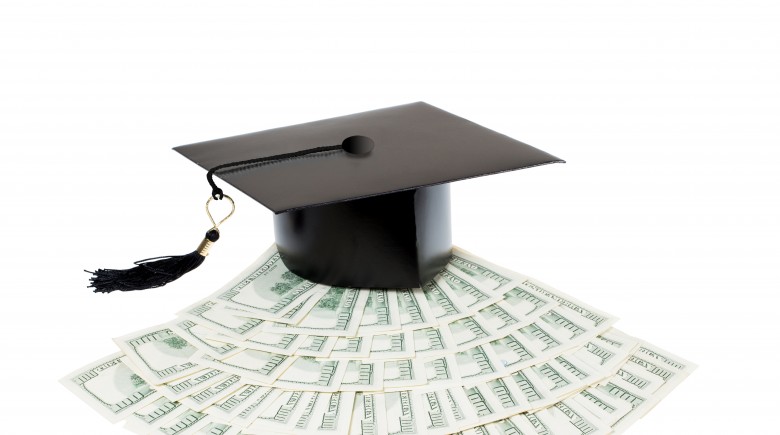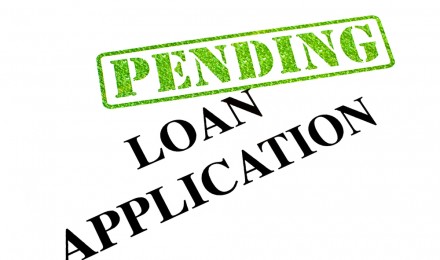The availability of student loans makes it possible for practically anyone to attend a college or university. With present economic conditions, most parents cannot afford to front the cost of their child’s college tuition. This creates a financial bind for kids who want to complete an undergraduate or graduate degree.
Some students work and pay their own way through school, which alleviates student debt upon graduation. But for students who want to focus on their education and only work part time, getting a federal student loan is the easiest route. Funds can pay for tuition, rooming, books and other supplies
If you need financial assistance for school, applying for a federal student loan makes perfect sense. Although a student loan lets you attend school now and worry about finances later, it’s smart to estimate your student loan payment before you borrow. While you won’t determine an exact figure, a rough estimate can better prepare you for this expense. Besides, if you know what to expect tuition wise, you can take the most cost-effective educational path.
1. Understand the True Cost of College
Your tuition will vary each semester, and this figure is based on your number of credit hours. To estimate your student loan payment before you borrow, consider the number of classes or credit hours you plan to take each semester. For example, you may take the fast track and complete 18 credits a semester, or go slow with 12 credits a semester.
For each college on your list, research the cost per credit hour. For example, if a particular school charges $275 per credit hour for an undergraduate degree, 12 credits will cost about $3,300 a semester, or $6,600 a year. Multiply this cost by four years and you’ll pay approximately $26,400 for a four-year degree – not including rooming and books.
2. Know the Interest Rate for Student Loans
Another factor to consider when estimating your student loan payment before you borrow is the loan interest rate. Federal student loans feature low, fixed rates which vary depending on the type of assistance. For example, unsubsidized Stafford Loans have an interest rate of 6.80%, whereas PLUS Loans for Parents have an interest rate of 7.9% (as of 2013). If you’re considering a private student loan, contact multiple banks and other lending institutions and inquire about their student loan rates.
3. Refer to a Student Loan Calculator
Once you’ve estimated the cost to obtain your degree and you’ve researched interest rates, plug these figures into a student loan calculator and estimate your student loan payment. A calculator can estimate your payment based on a standard, extended or graduated repayment plan. Additionally, a calculator can determine how long it’ll take to pay off the loan based on your monthly payment.
It’s easy to forget about your student debt while in school. Federal funds are disbursed directly to the school, and because repayment doesn’t begin until at least six months after graduation, you may lose track of how much you actually owe. If you estimate your loan payment before borrowing, you’ll know what to expect after graduation, which can alleviate payment shock.
The availability of student loans makes it possible for practically anyone to attend a college or university. With present economic conditions, most parents cannot afford to front the cost of their child’s college tuition. This creates a financial bind for kids who want to complete an undergraduate or graduate degree.
Some students work and pay their own way through school, which alleviates student debt upon graduation. But for students who want to focus on their education and only work part time, getting a federal student loan is the easiest route. Funds can pay for tuition, rooming, books and other supplies
If you need financial assistance for school, applying for a federal student loan makes perfect sense. Although a student loan lets you attend school now and worry about finances later, it’s smart to estimate your student loan payment before you borrow. While you won’t determine an exact figure, a rough estimate can better prepare you for this expense. Besides, if you know what to expect tuition wise, you can take the most cost-effective educational path.
1. Understand the True Cost of College
Your tuition will vary each semester, and this figure is based on your number of credit hours. To estimate your student loan payment before you borrow, consider the number of classes or credit hours you plan to take each semester. For example, you may take the fast track and complete 18 credits a semester, or go slow with 12 credits a semester.
For each college on your list, research the cost per credit hour. For example, if a particular school charges $275 per credit hour for an undergraduate degree, 12 credits will cost about $3,300 a semester, or $6,600 a year. Multiply this cost by four years and you’ll pay approximately $26,400 for a four-year degree – not including rooming and books.
2. Know the Interest Rate for Student Loans
Another factor to consider when estimating your student loan payment before you borrow is the loan interest rate. Federal student loans feature low, fixed rates which vary depending on the type of assistance. For example, unsubsidized Stafford Loans have an interest rate of 6.80%, whereas PLUS Loans for Parents have an interest rate of 7.9% (as of 2013). If you’re considering a private student loan, contact multiple banks and other lending institutions and inquire about their student loan rates.
3. Refer to a Student Loan Calculator
Once you’ve estimated the cost to obtain your degree and you’ve researched interest rates, plug these figures into a student loan calculator and estimate your student loan payment. A calculator can estimate your payment based on a standard, extended or graduated repayment plan. Additionally, a calculator can determine how long it’ll take to pay off the loan based on your monthly payment.
It’s easy to forget about your student debt while in school. Federal funds are disbursed directly to the school, and because repayment doesn’t begin until at least six months after graduation, you may lose track of how much you actually owe. If you estimate your loan payment before borrowing, you’ll know what to expect after graduation, which can alleviate payment shock.







